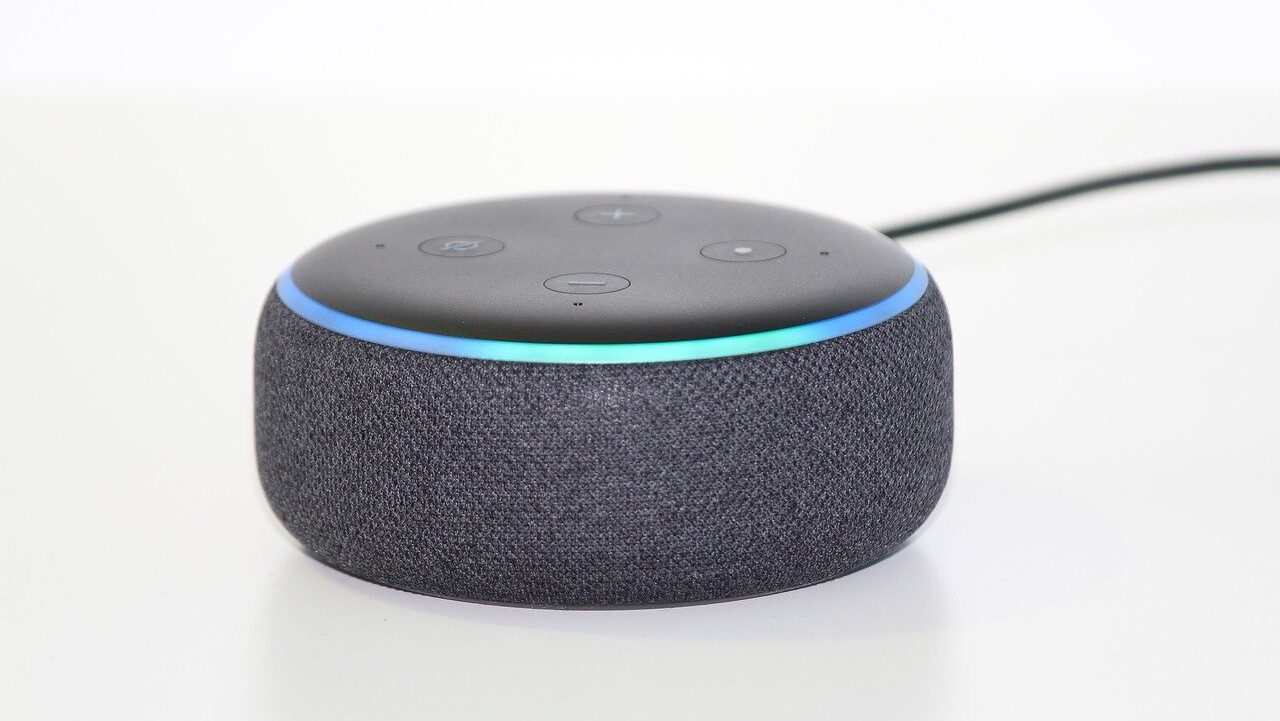Devices for Your Goals Smart Speakers & Displays

What It Is
At its simplest, a smart speaker is a speaker that connects to the internet and can be controlled primarily by voice command. A smart display is a type of smart speaker that has a built-in touchscreen and camera.
While smart speakers respond to requests by speaking back to you aloud, smart displays have the benefit of also providing information visually on a touchscreen. Both types of devices connect to an app on your smartphone.
Examples of smart speakers and their voice assistants include:
- Amazon Echo with Alexa
- Apple HomePod with Siri
- Google Nest with Google Assistant
Did You Know?
It’s possible to use smart speakers even if you don’t communicate using speech.
For example, Kyle uses a picture-based communication app on his smartphone to ask his smart speaker how his favorite sports team did in a recent game.
How It Helps
Smart speakers and displays are capable of helping with a variety of tasks, including controlling other smart devices and automations. Here are some examples of what you may be able to do with a smart speaker or display:
- Check the time, news, and weather.
Ask “Is it supposed to rain later today?” - Search the internet.
Find out if your team won the game last night, ask for the answer to a math equation, or find out if the train/bus is on time or delayed. - Set timers, reminders, and alarms.
Set a reminder for when the milk you purchased will expire, or a daily reminder to alert you five minutes before you need to leave for work. - Manage your calendar.
Ask what your schedule is tomorrow, or add an appointment to your calendar using your voice. - Play music, podcasts, and audiobooks (and video content on smart displays).
Play your favorite song or watch a video. Some smart speakers will even make suggestions based on what you have been listening to or watching. - Hear a joke.
Ask your smart speaker to tell you a joke. - Control a TV.
Power the TV on and off, change channels, and control the volume. - Make shopping and to-do lists and order groceries and house supplies.
Tell your device what you want to add to your list, and find the full list in the app on your smartphone while you’re out shopping (which can also sync across apps on the phones of family members and caregivers – so they can do the shopping!). - Make phone (and video) calls.
Call a family member to chat, call emergency services in case of emergency, or call your doctor for a telehealth appointment. - Identify objects.
With an Amazon Echo Show (a smart display), hold an item in front of the camera and ask, “What am I holding?” to hear back a name or description of the object. - Find and follow recipes.
Learn how to make a healthy meal with step-by-step instructions, and easily add the ingredients to a shopping list in the mobile app. - Make announcements throughout the home via speakers/displays in other rooms.
Announce that dinner is ready throughout the house. - Communicate with people using speakers/displays in other rooms and even in other homes.
Check in on a family member, or call a caregiver for help. - Activate services to guard your home.
Receive an alert to your smartphone of possible unwelcome sounds or movement. - Connect with and control other smart devices by voice.
Turn on and off smart lights, control smart TVs and media streaming devices, control smart thermostats, to name a few. - Automate events between multiple smart devices.
With the phrase “Good morning,” trigger the bedroom lights to turn on, the thermostat to warm to a comfortable temperature, the coffee maker to start brewing coffee (using a smart plug), and the speaker/display to share the weather and news for the day.
See It in Action
Choosing Your Device
Choosing the right device for you depends on many factors, including:
- What you want to do with the device
- How you want to do it
- Your accessibility needs
- The layout of your home
- Your internet connection
- What devices you would like to integrate together
Use our self-assessment to review your unique situation and needs, then read our top tips on how to choose your smart home technology.
Product Reviews
Once you have a good idea of what you want and need, research which products can help. Reviews can be very useful to understand each product’s strengths and limitations.
The following guides from Wirecutter review a number of smart home devices, including smart speakers and displays:
- These Smart Home Devices Can Enhance Independence for People With Disabilities and Mobility Needs
- The Best Smart Home Devices to Help Seniors Age in Place
Below are some of our favorite review websites. Many of them have “best of” lists for smart devices, as well as in-depth reviews of specific products. Try performing a search online using the name of the website plus the device type and the year. For example: CNET best smart speaker 2021.
Know what device you want but not sure how to fund it? Pennsylvania Assistive Technology Foundation (PATF) can help.
Learn About Funding



